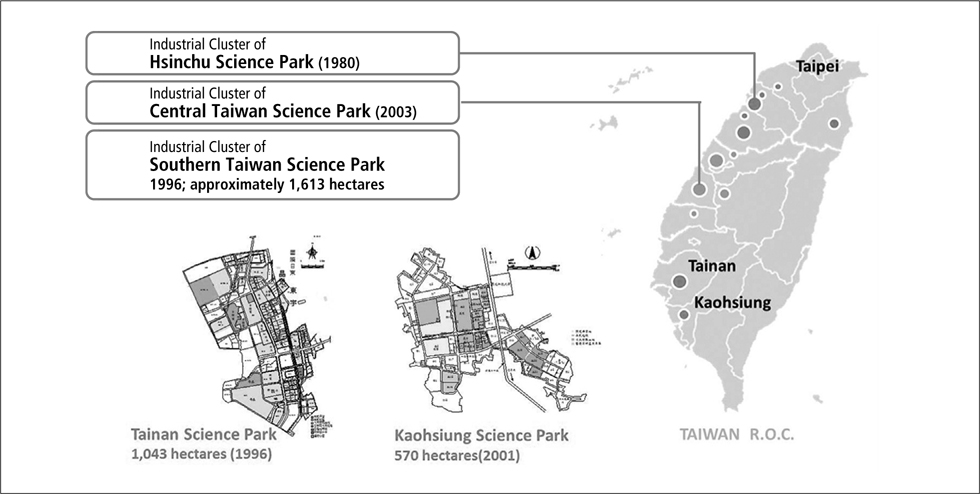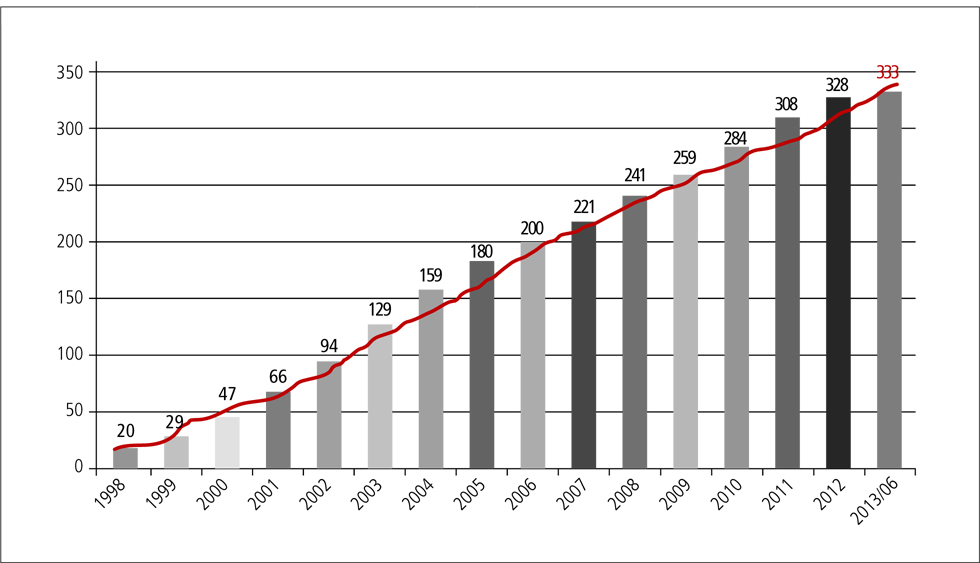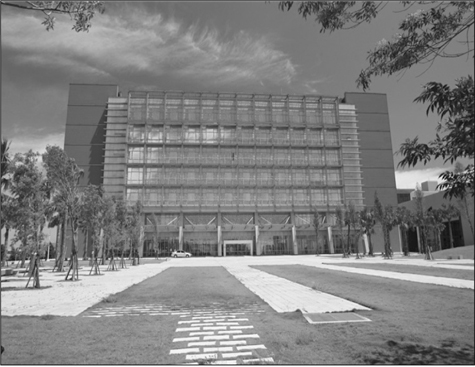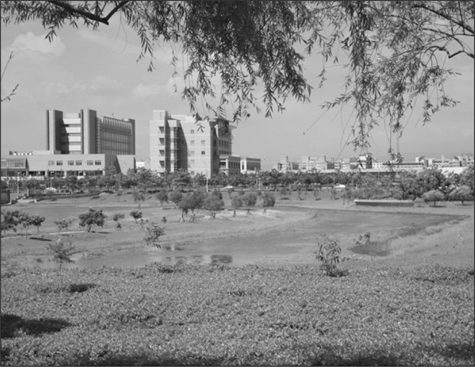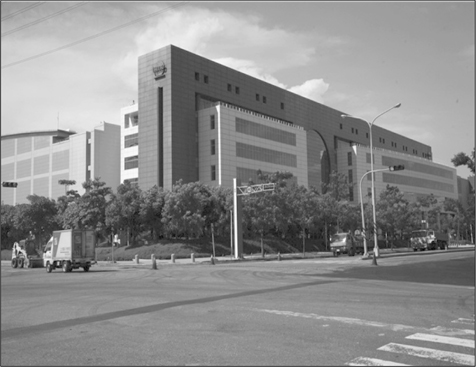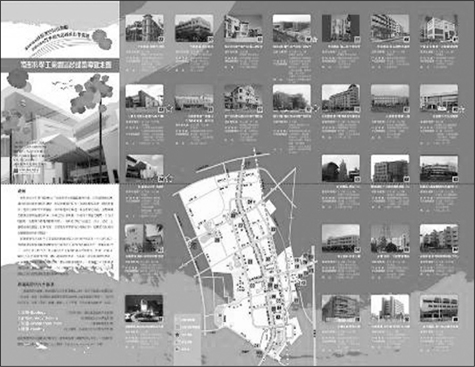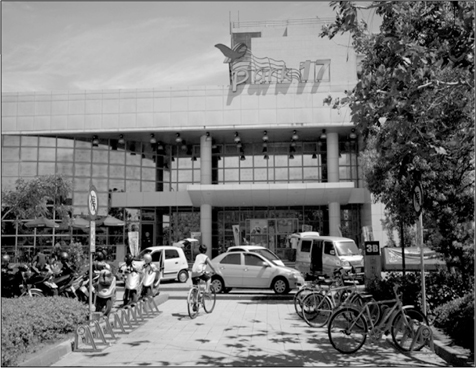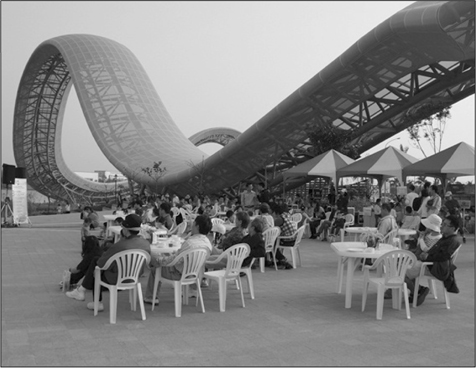



The Southern Taiwan Science Park (STSP) is established by the government of Taiwan in the southern part of the country which consists of two sites: Tainan Science Park and Kaohsiung Science Park. The geographic location of Tainan Science Park (TSP) is between Sinshih, Shanhua, and Anding districts of Tainan City with a total area of 1043 ha (2,578 ac), while Kaohsiung Science Park (KSP) is located between Luzhu, Gangshan, and Yong-an districts of Kaohsiung city in the area of 570 ha (1,409 ac). National Science Council established a management body – Southern Taiwan Science Park Administration (STSPA), located in TSP to serve the tenant firms in both sites. <Fig. 1> shows the location of STSP and its two park sites, <Table 1> shows some basic development information.
[Table 1.] Current Statistics of Southern Taiwan Science Park (STSP)
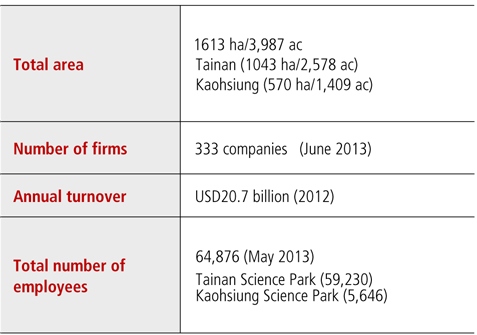
Current Statistics of Southern Taiwan Science Park (STSP)
STSP is established in 1998, it has embraced very fast increase of investment in terms of tenant companies, as shown in <Fig. 2>, and it is generally seen as a successful high tech industrial development project, because the primary goal for the development of science parks in Taiwan is to enhance the growth of high technology industries.
However, STSPA did not satisfied with the economic-only development model along with the fast industrial growth, and it has been trying to give additional meanings to the science parks it operates, Kung (2014) recently reviewed the development processes of STSP and the evolution of its “green development strategies”. Indeed, STSP has devoted to this strand of thoughts and practice further, and the new slogan “Cultivating Southern Taiwan, Positioning Globally” in 2012 envision STSP aspiration to become a high-tech industrial and talent center in Asia, and at the same time, develop businesses and create job opportunities in Southern Taiwan. STSPA also put forward the importance of creating a better environment by promoting environmental protection, green technology, culture and art “green production, comfortable life, and diversified ecology.” This article will briefly review and update the ongoing development practice.
According to the high technology industry sector used by the science park official statistics in Taiwan, major contributions of the STSP’s revenues come from the optoelectronics industry (47 companies), followed by Integrated Circuit (11 companies), and precision machinery (44 companies). Other industries such as biotechnology (48 companies), telecommunications (11 companies), computer and peripheral (2 companies), and other industries (5 companies) contribute smaller portion of STSP’s revenue, as shown in <Table 2>.
[Table 2.] STSP’s Revenue by Its Industry Sector (2012)
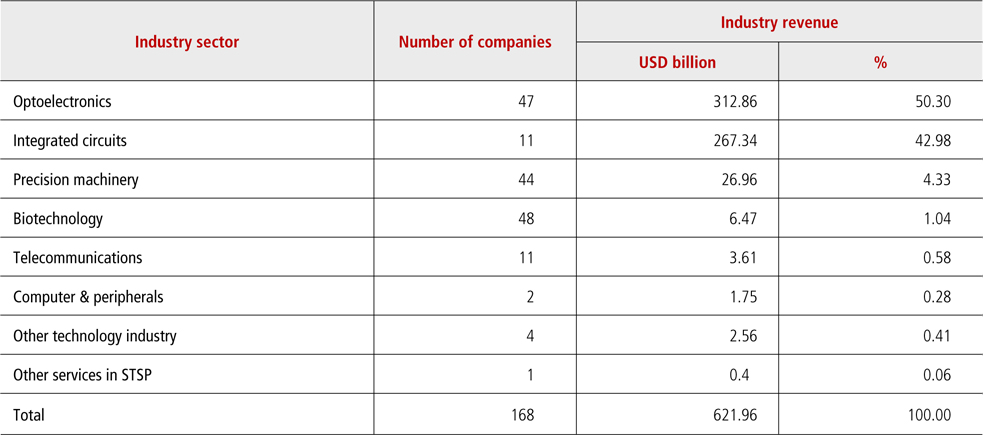
STSP’s Revenue by Its Industry Sector (2012)
STSPA considers there are four major high-tech industry clusters formed in STSP:
Optoelectronics The optoelectronics cluster has reached 47 establishments as per 2012. The sector generated USD 312.8 billion in 2012, 50.03% of STSP’s total revenue. The leading company of the cluster - Chi Mei Group has established 7 fabs and OLED R&D center in STSP.
Integrated Circuits/IC As per 2012, there are 11 IC manufacturers in STSP, with the revenue of USD 267.34 billion, comprising 42.98 % of STSP’s total revenue. TSMC, UMC, Hitachi are among the few companies which operate in STSP. UMC has set up its R&D Center in STSP.
Green Energy and Energy Saving This includes those companies specializing in solar energy, LED, lithium batteries for electric hybrid cars. Some of the companies became major world’s supplier, for example, E-One Moli Energy Corp which is now one of the top five largest manufacturers of lithium batteries of hybrid electric cars.
Biotechnology Biothechonology industry is one of the core industries which contributes to the revenue of STSP. There are 48 companies as per 2012, contributed USD 6.47 billion, 1.04 % of STSP’s total revenue.
Major tenants in each of these clusters are listed in <Table 3>. STSP invites more companies to fulfill the supply chain of each sector to attract more companies to join the science park.
[Table 3.] Examples of Companies in STSP High-Tech Industry Cluster
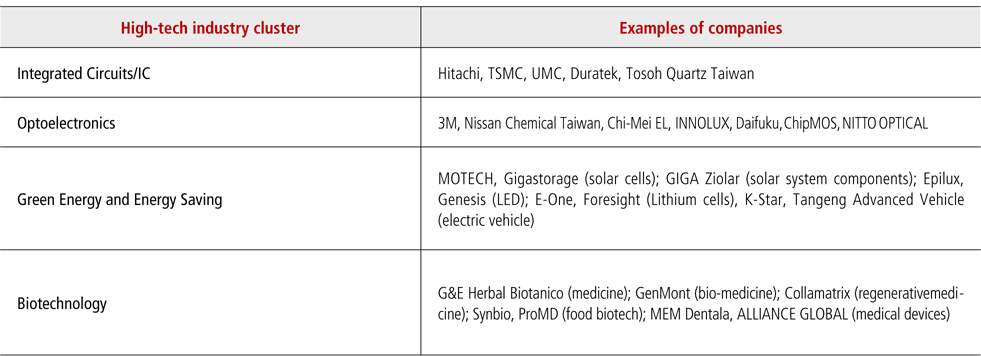
Examples of Companies in STSP High-Tech Industry Cluster
While the business investment and market force have shaped the current industrial composition in the park, the STSPA has been looking into the possibility of establishing some additional contributions to the society in general and persistently finding tactics to realize these thoughts – industries and spatial planning that can contribute to the sustainability of the earth, a better environment for innovation, and integration of culture and technology.
Green Energy and green spatial development (Sustainability): The development plan is to encourage firms in STSP to collaborate with industry, academia, and research in the field of green technology, to finally reach the goal of STSP as a green energy cluster. This development plan is based on the research of “National Energy Technology Plan” and “Green Energy Industry Improvement Plan” which provide the research fund to STSP for developing green technology andapply it to practical products. The government allocates NTD35 million (USD1.17 million) from August 2013 – August 2014 for firms in STSP to collaborate in R&D with 1 academia or research institution. <Fig. 3-6>.
Innovation and start-up platform (increase new innovative firms): The objective of this development plan is to promote innovation and entrepreneurship in STSP. The execution is in a form of national competition for start-up teams in the field of science-technology, mentored in science park incubation center. In the first competition, 243 teams registered, shortlisted into 36 teams in the final, including 9 teams from STSP. At the moment, the application is open for the second competition, with the aim to select 30-40 new teams. <Fig. 7>.
Integration of cultural and creative industries in STSP (culture and creativity): As part of STSPA’s vision to create better and healthy environment, STSP is integrating culture and creativity in its environment. STSP hosts the extension branch of the National Museum of Prehistory and also provides the land for public arts and cultural artifacts to create fun and surprises in the technology parks. STSP also hosts activities in the park to promote arts and culture, such as Spring Culture and Art Festival, Experience Taiwan Hakka Culture, STSP Arts Festival, and STSP Creative Design Exhibition. <Fig. 8>
4. STSP MAJOR EVENTS FOR SUSTAINABILITY, INNOVATION AND CULTURE IN 2012
In practice, STSP hosts and participates in numerous events of various scales in accordance to the development direction described in the previous section. A brief review of the chronicles in the STSPA official website indicates that out of the total 76 milestone activities recorded in year 2012, more than one third (27) of the items can be regarded as events related to the enhancement of development with sustainability, innovation and culture, as shown in <Table 4>. These development directions have been emphasized again in the 2013 STSP Administration prospect as “dedication to the development of Industrial clusters,” “commitment to sustainable development,” and “promotion of culture and arts” in order to make the STSP an outstanding example in the promotion of a balanced development of high technology industries and green environment.
[Table 4.] STSP's Major Events in 2012
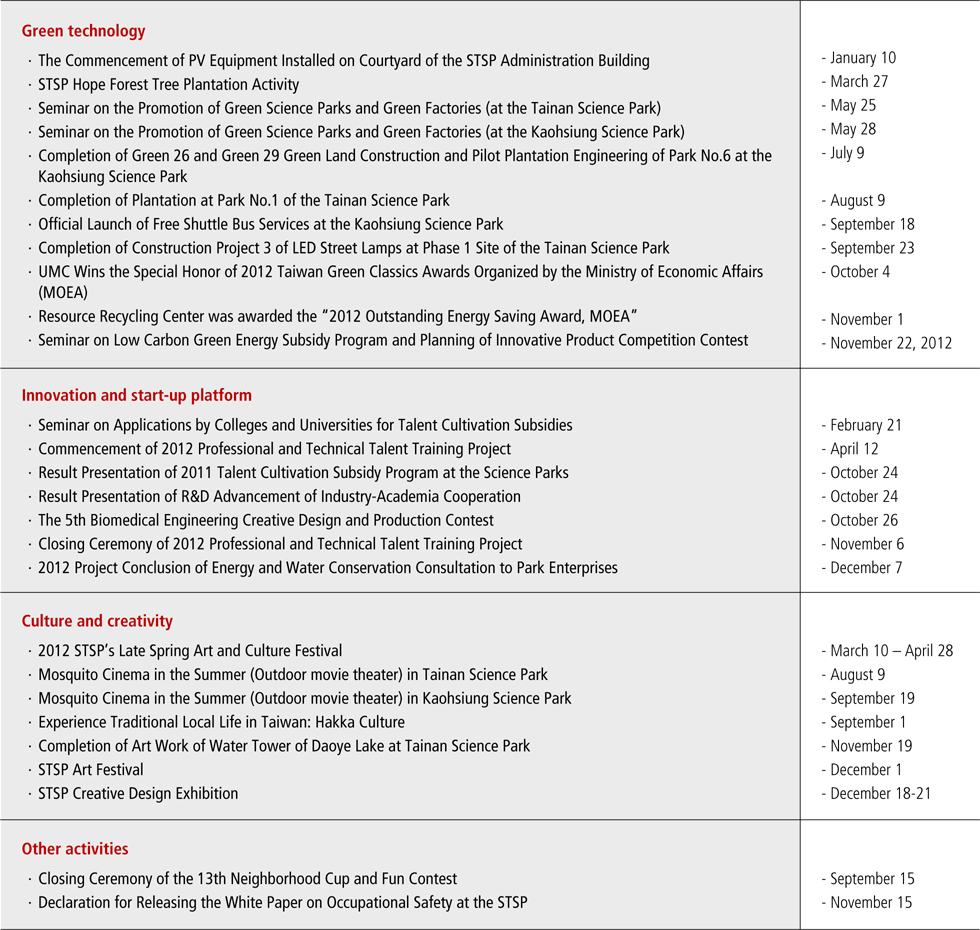
STSP's Major Events in 2012
5. THE ROLE OF UNIVERSITY IN SCIENCE PARK
Universities, with their professors and research teams, are often regarded as one of the key factors to support the success of science parks. In general, universities provide human capital needed by science park firms, they collaborate with high technology firms in research and development activities, they provide ideas to the science park management bodies. However, the role of university seems to be not the same through the course of science park development. In the case of STSP, current situations include:
University as the provider of human capital. University serves as the supplier of human capital for the job market, including STSP. As per May 2013, there are 64,876 employees in STSP: 24 % with high-school degree, 16 % with college degree, 40 % with bachelor degree, 18 % with master degree, and 1 % with doctorate degree. It is obvious that nearly 60 % of the STSP workforce are university graduates, although there is no detailed information, the general impression is that the majority of them are from universities in the region.
Universities as collaborator in R&D. In the early years, ROC government concentrated its efforts to promote R&D activities on the high tech firms in science parks. However, the recent trend is to promote the collaboration between academia and industry. National Science Council, Ministry of Economic Affairs (MOEA), and Ministry of Education (MOE) provides fund to partially support research projects between universities and STSP firms; Kung and Yen (2010) reviewed the formation of medical device industrial cluster in STSP, can be taken as one of the fruitful cases of such R&D collaborations. This new strategy has increased the amount of industry- academic R&D collaborations in Taiwan significantly.
Universities as consultant. Academia are often invited to provide expert views on the policies development and directions of science park. Most often, academia from relevant disciplines of major universities are invited as the evaluator of new investment projects. National Cheng Kung University has been invited to operate an incubation center in STSP for more than ten years; and in 2013, it was invited again to assist pre-enterprise stage teams which had good ideas to develop their businesses. With the rise of cultural and creative industries and their mutual benefit potentials with new technologies, STSP is going to examine the possibilities of crossing the border of “science-based industries” and to allow those potential teams to reside in the spare spaces in the commercial center Park 17 <Fig. 7>, and NCKU is again providing consultancy services to STSPA and the teams. Another project aiming at improving the creative and innovative environment in STSP is also being contracted to NCKU which the author is involved.
In summary, Southern Taiwan Science Park is reacting to the global industrial change and global concern of sustainable development with various strategies and tactics. We may find that most important among these measures since 2010 include: the construction of green environment and green energy industrial cluster, a more innovative climate, and the invitation of culture and creativeactivities. NCKU and other universities in the region are collaborating actively with STSPA and its tenant firms in the processes of making a better future Southern Taiwan Science Park.
